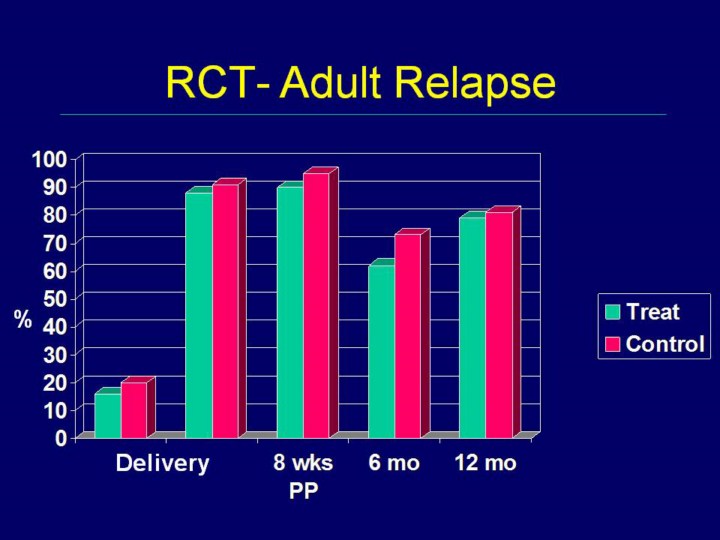| front |1 |2 |3 |4 |5 |6 |7 |8 |9 |10 |11 |12 |13 |14 |15 |16 |17 |18 |19 |20 |21 |22 |23 |24 |25 |26 |27 |28 |29 |30 |31 |32 |33 |34 |35 |36 |37 |38 |39 |review |
 |
This graph represents the relapse rates reported from four randomized controlled clinical trials of pregnant smoking adults provided smoking cessation interventions. The first bar represents an early study by Ershoff (1989) regarding biochemically confirmed relapse vs abstinence for women recruited through their HMO and offered a minimal intervention during pregnancy. The reported adjusted odds ration was 2.8. In another study by Ershoff (1995), spontaneous quitters were offered relapse prevention. Unfortunately, no significant differences were found and relapse was high by delivery. A mail-delivered relapse prevention program was used for the treatment group. (second bar) Hjalmarson (1991) Findings reported in 1991 of a Swedish sample used self-help programming to obtain a 10% quit rate in the treatment group with a 6% quit rate in a control group by the 8th week following delivery. Abstinence was confirmed by blood thiocyanate samples. (third bar) Johnson and Ratner reported on 6 month and 12 month follow-up. Their studies provide evidence of increasing relapse over time in this particular interval following delivery. Smoking was biochemically confirmed. (fourth and fifth bars) |